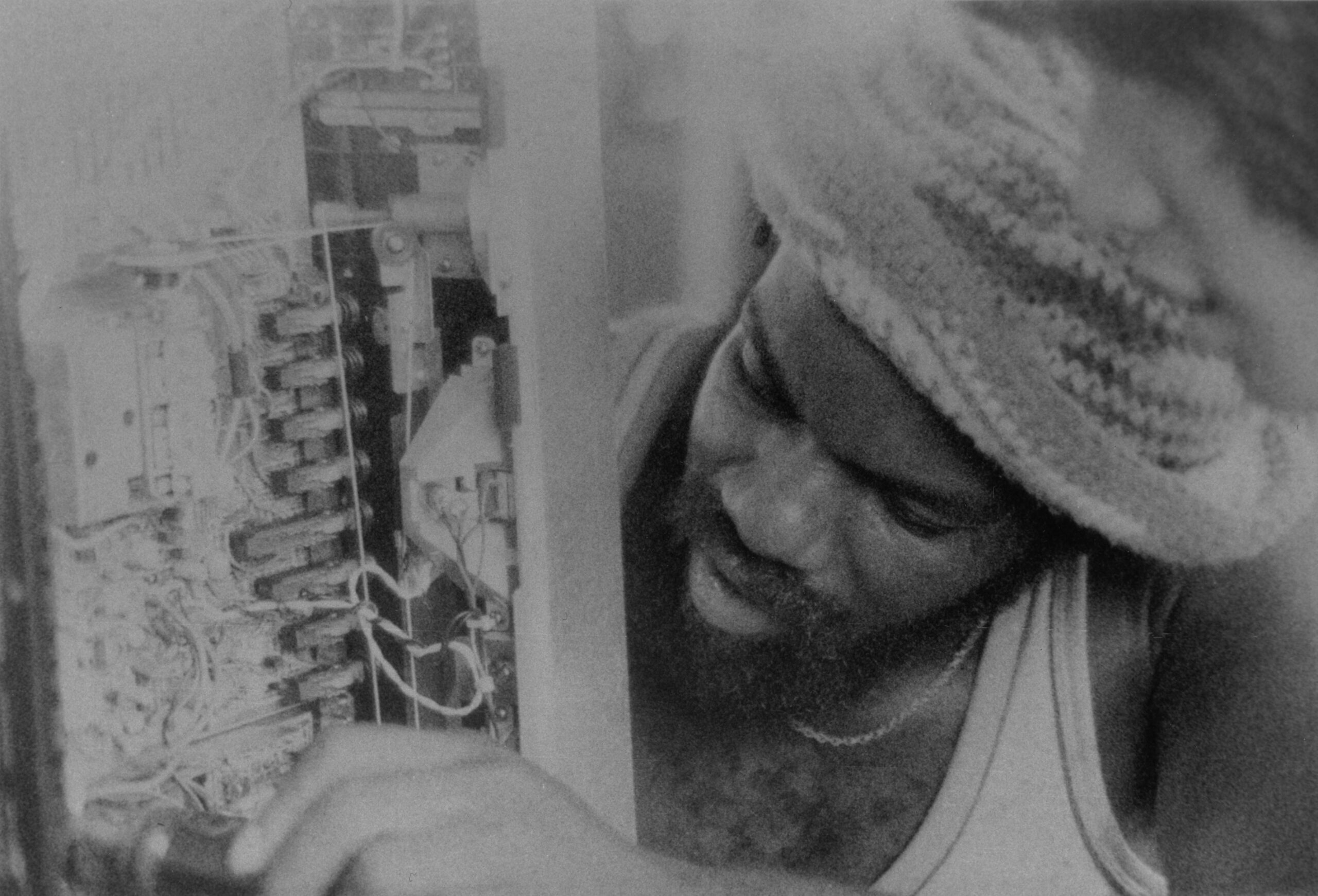Odell Rhodes, Jr. first encountered Peoples Temple during one of Jim Jones’ presentations in Detroit, Michigan in June, 1976 (Feinsod 1981). He had earlier served 8 years in the U.S. Signal Corp and struggled with heroin addiction after he was discharged (RYMUR 89-4286-1840; Feinsod 1981). In October 1976, Rhodes saw that his friend John Dine had been able to beat his alcohol addiction when Dine joined Peoples Temple after the presentation in June (Cahill 1979; Feinsod 1981). Later that month, Rhodes decided to join Peoples Temple for a fresh start and was driven to San Francisco (RYMUR 89-4286-1840; Cahill 1979).
There he decided to work at the Temple Day Care Center and was quickly recognized by many Temple members, including Jim Jones, as taking great care of the children. The children eventually called Rhodes ‘Dad’ (Serial 1579; Cahill 1979; Feinsod 1981). Rhodes moved from a Temple dormitory to a communal Temple family house where he took care of the children living there with five other adults. He also enjoyed watching films with Peoples Temple in San Francisco and eventually in Jonestown (RYMUR 89-4286-1840; Feinsod 1981).
Rhodes decided to travel to Jonestown Guyana in August, 1977 after his nine housemates had moved there (Feinsod 1981). When he arrived August 22, 1977, Rhodes was initially assigned to plant cassava with one of his new cabinmates, Stanley Clayton (RYMUR 89-4286-1840, Feinsod 1981). He was able to work as a teacher for children eight to fourteen years old (Moore 1985). Rhodes primarily taught crafts to the children, who were said to look up to him. The children continued to view Rhodes as a stable father figure, developing into a stronger familial bond (Cahill 1979). He enjoyed the communal nature of Jonestown and the life he made there (Feinsod 1981).

In January, 1978, Jonestown changed with decreased food, increased work, and decreased efforts in construction and farming. Rhodes observed Jim Jones’ developing drug problem, as well as the constant fear of invasion with the increasing amounts of security and armed guards (RYMUR 89-4286-1840, Cahill 1979; Feinsod 1981). He witnessed the repeated sedation and assault of his friend Chanda Oliver when he was placed in the infirmary with her due to an infection in his chronically bad leg. Rhodes later volunteered to work the night shift in the nursing-care cottage to avoid attending the meetings, as fear grew in the community (Feinsod 1981). Despite knowing that leaving was forbidden, Rhodes wrote Jim Jones a letter expressing his wish to leave the settlement. He also voiced his desire during a public gathering at the pavilion and was punished by being assigned longer hours (RYMUR 89-4286-1840).
Rhodes decided to remain in Jonestown to support his students and friends, as he did not want to leave the life he made. Since he did not attend meetings due to working the night-shift, Rhodes had little interaction with Jones (Feinsod 1981). He was known to be constantly busy as he did his best to support those around him and lend a hand when needed. Rhodes was able to maintain an enjoyable life in Jonestown with strong friendships and little conflict (Feinsod 1981; Kohl 2014).
On November 18, 1978, Rhodes made the decision to escape the final White Night in Jonestown. He realized that the White Night was not just a test of loyalty when he was handed the poisoned ten or eleven year old Derrick Johnson. Rhodes attempted to comfort several of the dying children by putting them to rest in a field near the pavilion (RYMUR 89-4286-1840; Moore 1985; Cahill 1979; Feinsod 1981).
He and Stanley Clayton volunteered to accompany a nurse named Phyllis Chaiken to the infirmary when Schacht requested a stethoscope. The armed guards let them to pass with the nurse, allowing them to distance themselves from the pavilion (Brailey 1998; RYMUR 89-4286-1840; Krause 1978; Moore 1985; Serial 2242). Rhodes hid under the infirmary by exiting through the back door (Brailey 1998; RYMUR 89-4286-1840; Serial 2242). Rhodes stayed there until sundown and left when all armed persons were requested to go to the radio room over the loud speaker (RYMUR 89-4286-1840). Rhodes walked and ran for approximately four and a half hours to Port Kaituma where he was the first to alert the Guyanese authorities to the tragedy in Jonestown (Brailey 1998; Serial 1579; Krause 1978; Moore 1985; Serial 2242).
On November 20, 1978, Rhodes assisted Commissioner Roberts and many others in identifying the deceased and the buildings in Jonestown. He served as a witness of what happened in Jonestown, both in trials and investigations (Brailey 1998; RYMUR 89-4286-1840).
“Guyana Inquest,” RYMUR 89-4286-1840. Accessed at https://jonestown.sdsu.edu/?page_id=13675.
Jeff Brailey, “Chapter 2 – Death in the Tropics,” The Ghosts of November: Memoirs of an Outside Who Witnessed the Carnage at Jonestown, Guyana, 1993. Accessed at https://jonestown.sdsu.edu/?page_id=62697.
Charles A. Krause, “Survivor: ‘They Started with the Babies,'” The Washington Post, November 21, 1978, Accessed at https://jonestown.sdsu.edu/?page_id=86426.
Rebecca Moore, “Chapter 12 – ‘The Last To Die,'” A Sympathetic History of Jonestown: The Moore Family Involvement in the Peoples Temple, vol. 14, Lewiston NY: The Edwin Mellen Press, 1985. pp. 317-340. Accessed at https://jonestown.sdsu.edu/?page_id=16589.
Tim Cahill, “In the Valley of the Shadow of Death: Guyana After the Jonestown Massacre,” Rolling Stone, January 25, 1979. Accessed at https://www.rollingstone.com/culture/culture-news/in-the-valley-of-the-shadow-of-death-guyana-after-the-jonestown-massacre-242259/.
Serial 1979 can be accessed at https://jonestown.sdsu.edu/?page_id=79240.
Serial 2242 can be accessed at https://jonestown.sdsu.edu/?page_id=78593.
Ethan Feinsod, Awake in a Nightmare, NY: W W Norton & Company, 1981. Accessed at https://jonestown.sdsu.edu/wp-content/uploads/2019/03/Awake-in-a-Nightmare-Feinsod.pdf.
Laura Johnston Kohl, “Remembering Odell Rhodes,” October 7, 2014. Accessed at https://jonestown.sdsu.edu/?page_id=61588.